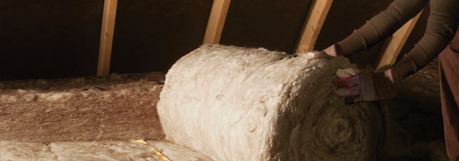Insulating your home
September 6, 2012
According to the Energy Saving Trust, the average home loses 26% of its heat through the roof, 33% through the walls and 20% through drafts and bad ventilation. If you live in an older or poorly insulated home, the good news is that you can slow the escape of heat in all these areas through installing adequate home insulation. Unlike solar panels, wind turbines or other additions that will slash your home's carbon footprint, insulation doesn't require planning permission. It is also relatively low-cost and straightforward enough for the average DIY-er to install without calling in the professionals.

Loft insulation: one of the best methods of conserving heat
There are several advantages to insulating your home properly. Not only will you improve your eco credentials, you could also slash your utility bills saving hundreds of pounds every year. With every property now issued with a Performance Certificate that assesses energy efficiency, good insulation could also enhance the attractiveness of your home for potential buyers.
There are several home insulation projects open to DIYers, ranging from small to challenging. Before embarking on your own project, it's a good idea to talk to home insulation experts at home stores such as Wickes as well as taking advance of the resources offered by sites such as YouTube, which hosts insulation videos produced by trade professionals. It's also worth checking out the government's Energy Saving website, which contains some useful links and will tell you whether or not you might be eligible for a project grant. This initial research will help you decide which type of insulation will be suitable for your home as well as what scale of project you can realistically embark on yourself.
Those new to DIY should start small. Spray foam insulation will fill small gaps and block drafts, instantly improving the energy efficiency of your home. Draft stoppers places underneath doors – particularly doors that lead to outside space – are also an instant energy saver. Larger projects include cavity wall insulation, loft insulation and ground floor insulation. Of these, loft insulation is most suitable for home DIYers. Be sure to observe appropriate safety measures at all times and use materials that comply with buildings regulations. Wickes publishes an excellent guide to insulating your home that will take you through the process on a step-by-step basis.
![]()
To find a company who may assist you further, simply click on the free links located on the right hand side of the page.
Comments are closed for this article.